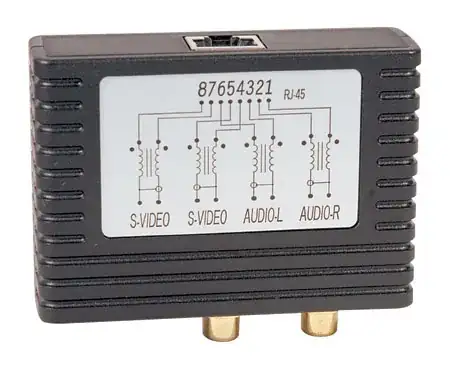I want to use CAT5e UTP cabling to carry audio and video over distances of maybe 150 feet or so.
I plan to use the CAT5e cable as follows:
- one wire pair for a composite video signal
- one wire pair for the left audio channel
- one wire pair for the right audio channel
- one wire pair left unused for the time being
I may also use the CAT5e cable as follows:
- one wire pair for s-video lumen channel
- one wire pair for s-video chroma channel
- one wire pair for the left audio channel
- one wire pair for the right audio channel
I have had success in the tests I have performed, and believe it is because CAT5e is rated to 350 MHz, while the video signal is only a fraction of that bandwidth, and the audio channels are even narrower.
I plan to install runs of CAT5e between the source (VCR/DVD player or computer) and the display (TV or DLP projector) in dozens of rooms, and want the inheritor to be able to pick up where I left off without scratching his or her head any saying 'WTF?'.
Questions:
Are there existing standards for either of these applications, as far as which color wire pairs to use for what?
Are there any good sources for CAT5e wire-color-coded punchdown (110-style) keystones or wallplates that terminate into red/white/yellow female RCA jacks or red/white female RCA jacks and a female s-video jack?
Thanks in advance!
